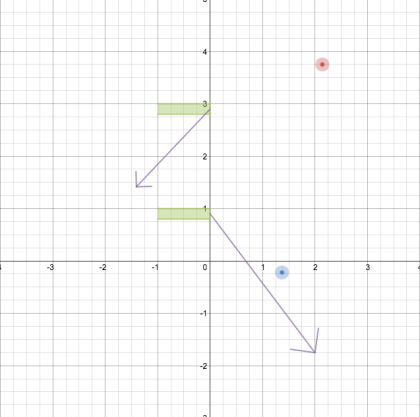Being a Visiting Assistant Professor means that I am perpetually searching for new jobs, and I am discovering that applying to teaching jobs is a tricky process. I decided some time ago that my strategy for setting myself apart from the crowd would be to emphasize my use of non-traditional teaching methods and my desire to constantly improve the way that I teach. By all accounts, this strategy has been very successful in getting me phone interviews for visiting positions. If the phone interview goes well, I end up having an exchange with the search committee that usually goes something like this:
Search Committee: Congratulations! We were impressed with your phone interview, and we would like to invite you to visit our campus and give a talk in front of our faculty and students that demonstrates your teaching style. Please provide us with a name for your talk so that we can advertise it.
Me: Excellent! The name of my talk is Implementing Non-Traditional Teaching Methods in the Physics Classroom.
Search Committee: That talk is not really appropriate for what we are looking for. We are looking for a talk that demonstrates your ability to make a complex topic understandable to undergraduates.
Me: Okay, I understand. How about Black Holes and their Formation?
Search Committee: Capital! (Okay, nobody ever said that, but how cool would it be if they did?)
Did you catch the subtle shift there? First, they ask for a talk that demonstrates how I teach, then they ask for a talk that demonstrates my ability to make a complex topic understandable to undergraduates. In my mind, those are not the same thing. I’m not the one offering the job, though, so I go along with it.
So I go and give my black hole talk, and it goes gangbusters. I get to show my enthusiasm for the subject and my personality, and the audience is reeling from all the crazy things about black holes that they just heard.
On two occasions, the search committee accepted my first talk, so I talked to them about some of the non-traditional teaching methods that other people/institutions have used and the evidence that shows the benefits of non-traditional teaching. Both times I was ridiculed by people in the audience. They attacked the validity of the supporting evidence and called the methods childish. That’s not to say that there weren’t people in the audience that supported me, but being ridiculed like that in front of a group of people tends to stick in your mind.
Many teachers seem to get offended when you talk about different ways of teaching. My intent is to make suggestions and inspire people to try something different, but some people take it as criticism. I’m probably partly to blame; walking the line between suggestion and criticism is difficult, and my excitement invariably causes me to stumble.
It’s not all bad news, though. Much of my success in getting people to try new things has been the result of people walking by my classroom and briefly watching. For example, some people were intrigued by what I was doing with whiteboards, and now there are whiteboards in every physics classroom in the building. My experiment with Standards-Based Grading has piqued the interest of some of my colleagues as well.
So I guess the lesson I learned is that I need to stop telling people what they should be doing. I should just do what I do, and if it is successful, people will notice.



